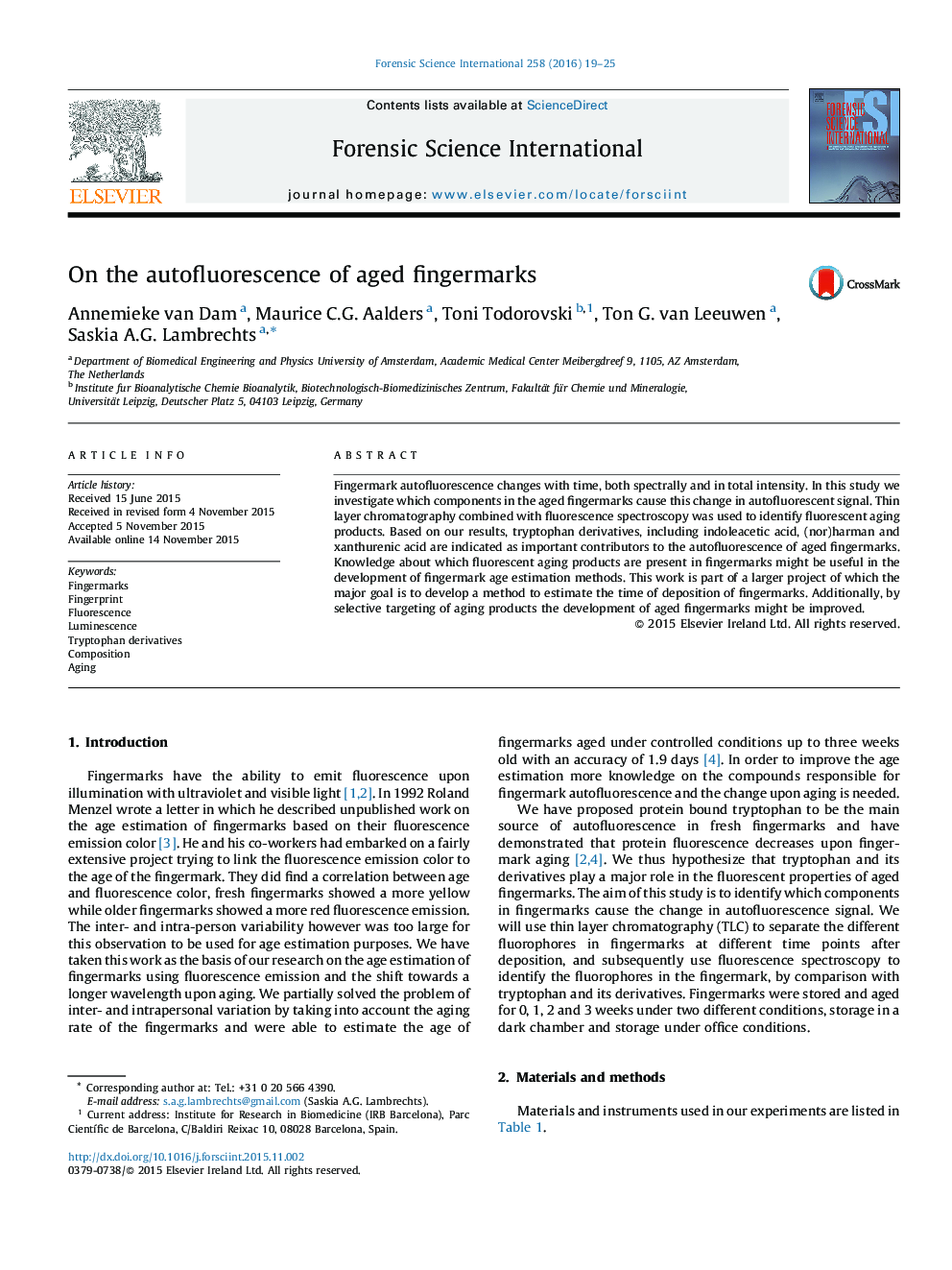| کد مقاله | کد نشریه | سال انتشار | مقاله انگلیسی | نسخه تمام متن |
|---|---|---|---|---|
| 95226 | 160420 | 2016 | 7 صفحه PDF | دانلود رایگان |
• Fingermark autofluorescence changes with time, both spectrally and in intensity.
• Aging products are identified using thin layer chromatography and spectroscopy.
• Main contributors to the autofluorescence of aged marks are tryptophan derivatives.
• Indoleacetic acid, (nor)harman and xanthurenic acid are indicated key contributors.
Fingermark autofluorescence changes with time, both spectrally and in total intensity. In this study we investigate which components in the aged fingermarks cause this change in autofluorescent signal. Thin layer chromatography combined with fluorescence spectroscopy was used to identify fluorescent aging products. Based on our results, tryptophan derivatives, including indoleacetic acid, (nor)harman and xanthurenic acid are indicated as important contributors to the autofluorescence of aged fingermarks. Knowledge about which fluorescent aging products are present in fingermarks might be useful in the development of fingermark age estimation methods. This work is part of a larger project of which the major goal is to develop a method to estimate the time of deposition of fingermarks. Additionally, by selective targeting of aging products the development of aged fingermarks might be improved.
Journal: Forensic Science International - Volume 258, January 2016, Pages 19–25
